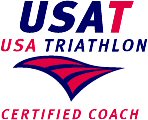10 Tips to Better Balance
When we're young, we generally take our balancing skills for granted. As we get older, however, we find that our balance (the ability to sense where our bodies are positioned and adjust muscle tension to maintain alignment) isn't what it used to be. The consequences of losing our ability to balance are significant. Falls are the leading cause of injury for older adults. Every year, 30 to 50 percent of people over age 65 sustain a fall; many never recover completely. Even less serious falls can result in physical adaptations (i.e., becoming less active, moving more slowly) that negatively impact the quality of life.
While some effects of aging--such as impaired vision, reduced reflex speed and decreased sensitivity of skin receptors--can impair balance and coordination, poor balance is not inevitable. Many physically fit older adults practice the same balance recovery strategies as younger adults and, as a result, are generally better at controlling their balance than their inactive peers.
How can you maintain good balancing skills? San Diego physical therapist Deborah Ellison, PT, an expert in functional exercise design, offers these tips:
1. Improve Your Cardiovascular Fitness. Improvements in this area will contribute to better gait, cardiovascular health, weight control, motor control, self-confidence and other factors that impact balance.

2. Practice Single-Leg Standing, or Yoga Balancing Postures. Start by standing on a solid floor and then progress to working on a thick carpet or soft foam surface. Also do side-to-side movements, such as side-to-side step touches or small squats, moving to the right or left. To add more challenge, use a wobble board (a device used by physical therapists that consists of a circular board on an unstable base), curbs, stairs or inclines.
3. Try Tai Chi, Qi Gong (Chi Kung) or Hatha Yoga Classes. These offer gradual and consistent balance training.
4. Practice Shifting Your Weight From Side to Side. If you stand on two digital scales, one under each foot, you will be able to tell how much weight is on each side. As you progress in this exercise, change the base of support by moving the scales closer together or placing them on a diagonal. With your feet still on the scales, you can also try sitting, standing or lifting an object from the floor.
5. Practice Walking Faster and Stepping Over Objects in Your Path. This will help improve speed and decrease hesitancy.
6. Improve Your Flexibility. Take stretching classes and learn how to do a stretching routine at home. Stretching exercises help increase your range of motion, particularly at the shoulder, torso, hip and ankle. Using a fitness ball will contribute to better pelvic mobility.
7. Improve Overall Strength. Lower-leg strength is particularly important for walking, maintaining dynamic balance and preventing falls. With the aid of a fitness professional, develop a complete strength program that will help you both reduce falls and recover from them.
8. Build Your Self-Confidence. Fitness programs increase your confidence and decrease your fear and apprehension about falling, thereby reducing your overall muscle tension. Develop your skills and your confidence by doing drills in which you negotiate curbs and stairs, and walk along a taped line while carrying cups of water.
9. Consult Your Physician. In some cases, custom-made orthotics (devices worn inside shoes) can help with balance. Also, your doctor will know if any medication you are taking may be affecting your balance.
10. Look for Professionals and Programs That Specifically Address Balance. As the population ages, balance training is becoming a more common component of fitness programs and services offered by personal trainers and physical therapists. Find a program that works for you.
Staying Grounded
Keep safety in mind as you practice balance training. Make sure walls, chairs or other objects are nearby to use for support, and do not practice exercises that are too challenging for you without the help of a professional.
No single factor is responsible for balance loss, Ellison notes, so it is important to participate in an integrated physical activity program that includes cardiovascular fitness, strength training, flexibility exercises, and balance and coordination work. In general, doing cross training and trying new activities--even simple ones, such as biking--will help you maintain your physical abilities as you age.
Article courtesy of IDEA Health & Fitness Association. Reprinted with permission.
Personal Training and Fitness Articles |
Wellness and Fitness Handouts
Nutrition Articles and Handouts








